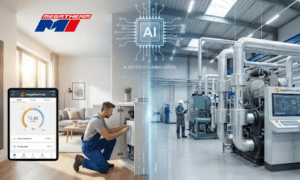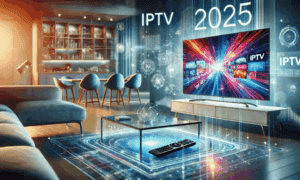There is an epidemic currently bogging brands down. Customer emails and messages are personalized, go out on time with zero to minimal intervention. It is perfect. But something feels off. Messages that should feel personal are starting to sound generic. The excitement of reaching customers in real-time fades, as the system starts pumping out the same templated content, again and again. The promise of efficiency starts to feel more like a mechanical process.
The challenge isn’t in the technology itself. When automation and creativity meet, the result can be seamless. But without the right approach, technology can quickly undermine the very creativity it’s meant to enhance.
The Shift from Manual Creation to Intelligent Automation
A decade ago, creative messaging meant long brainstorming sessions, elaborate copywriting, and manual scheduling. Today, automation tools can design, write, and send personalized campaigns in minutes. Yet, this doesn’t make creativity obsolete; it redefines it.
Automation has become the invisible partner that frees marketers to focus on the why and who, while it handles the when and how. The future belongs to brands that use automation not as a shortcut but as a strategy. When used intelligently, automation allows marketers to combine storytelling with real-time behavioral insights, crafting experiences that feel deeply human even when delivered by algorithms.
Where Creativity Meets Data
Data is a creative catalyst with the right tools at your disposal. Every click, purchase, or abandoned cart tells a story, and automation translates that story into action.
Consider an e-commerce store that sells skincare products. Instead of sending a generic “20% off” email, automation can trigger a message recommending products tailored to the customer’s skin type, purchase history, or even season.
This level of relevance transforms transactional communication into emotional engagement. Customers feel understood, not targeted. And that’s where creativity now lives, not in broad slogans, but in micro-moments of personalization made possible by automation.
AI and the Rise of Predictive Messaging
Artificial intelligence has elevated automation from simple scheduling to predictive creativity. AI tools now analyze millions of interactions to anticipate customer behavior, identifying the best send times, message formats, and even emotional tones that drive engagement.
The future of customer messaging lies in anticipation. Imagine an AI that detects a customer’s likelihood to churn and triggers a loyalty offer before they even consider leaving. Or an email engine that automatically prioritizes content based on open rates and seasonal trends.
As e-commerce brands increasingly rely on automation to enhance creative messaging, companies like TargetBay are redefining how customer engagement is built, merging email marketing, reviews, and loyalty into one intelligent ecosystem. By connecting these touchpoints, they help brands turn data into dialogue, bridging automation and creativity seamlessly.
Human Oversight: The Missing Ingredient in Automation
While automation can do the heavy lifting, human creativity remains the compass. Marketers still decide the brand voice, emotional triggers, and overarching strategy. Automation simply amplifies that vision at scale. The key is to find the balance between machine efficiency and human empathy.
A well-designed workflow combines human intuition with AI precision. Marketers set the direction, tone, visuals, and intent, and automation ensures it reaches the right audience at the right moment. This partnership doesn’t replace creative thinking; it magnifies it.
The Power of Feedback Loops
What truly sets next-generation automation apart is its ability to learn and improve continuously. Every campaign fuels the next with richer insights, what worked, what didn’t, and why. This feedback loop enables adaptive creativity, where campaigns evolve in real time.
For example, if an SMS campaign outperforms email for a particular customer segment, automation systems can pivot automatically, shifting future communication toward SMS without manual intervention. It’s a living, breathing ecosystem where creativity grows smarter with every interaction.
From Campaigns to Conversations
Traditional marketing campaigns were one-way broadcasts. Automated messaging, on the other hand, creates a dialogue. Through behavior-driven automation, brands can sustain ongoing, personalized conversations, responding instantly to customer actions rather than waiting for the next campaign cycle.
This shift changes the nature of creativity itself. It’s no longer about crafting a perfect headline; it’s about designing experiences that adapt dynamically. From AI-generated product recommendations to personalized loyalty rewards, every automated touchpoint becomes a creative opportunity to strengthen relationships.
Overcoming the Creative Fatigue Trap
One of the biggest challenges modern marketers face is creative fatigue, the exhaustion that comes from constantly producing new content. Automation solves this by repurposing and reimagining existing assets intelligently.
AI can reframe a single message into multiple formats: emails, SMS, push notifications, or even review follow-ups, all contextually adapted for the user’s journey. This approach keeps creativity sustainable. Instead of creating more content, marketers focus on creating smarter content that evolves with automation.
Building an Ethical Framework for Automated Creativity
With great automation comes great responsibility. Transparency and ethics must guide how brands use data to personalize messaging. Customers are more likely to engage with brands that respect privacy and communicate authentically.
Ethical automation involves setting boundaries, knowing when to automate, and when a human touch is essential. For instance, post-purchase thank-you messages or product feedback requests benefit from a more personal tone, even if triggered automatically.
The Road Ahead
Automation right now may feel like the end of the road, when in fact there is untapped potential for creativity. The most innovative brands are those that see automation as a creative enabler rather than a constraint. The future of customer messaging will be defined by how seamlessly brands blend data, technology, and empathy.
In the coming years, we’ll see automation move beyond channels into unified ecosystems where email, reviews, rewards, and customer feedback coexist in harmony. Creativity will soon become the living soul of collective brand personality and experience.



































